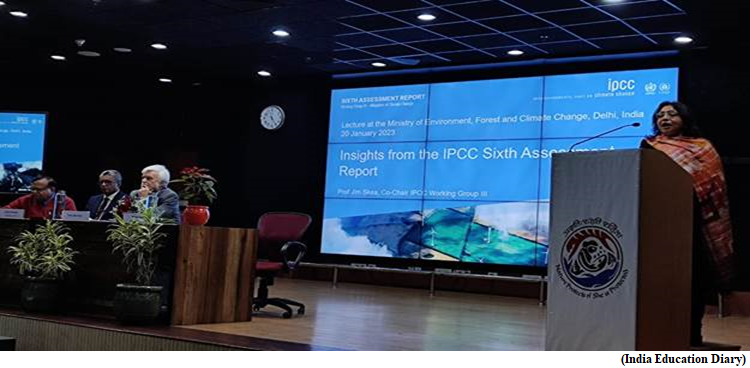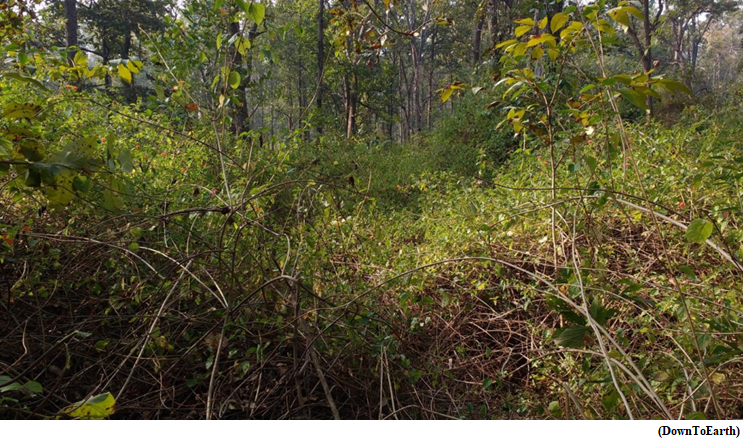Centre releases endorsement guidelines for Celebs and Social Media Influencers (GS Paper 2, Governance)

Why in news?
- Recently, the Department of Consumer Affairs under Ministry of Consumer Affairs, Food and Public Distribution released a guide ‘Endorsements Know-hows!’ for celebrities, influencers and virtual influencers on social media platforms.
Why it matters?
- The guide aims to ensure that individuals do not mislead their audiences when endorsing products or services and that they are in compliance with the Consumer Protection Act and any associated rules or guidelines.
- With the increasing reach of digital platforms and social media, such as Facebook, Twitter and Instagram, there has been a rise in the influence of virtual influencers, in addition to celebrities and social media influencers.
- This has led to an increased risk of consumers being misled by advertisements and unfair trade practices by these individuals on social media platforms.
Key Highlights:
- The "Endorsement Know-hows!" specify that disclosures must be prominently and clearly displayed in the endorsement, making them extremely hard to miss.
- Any celebrity, influencer or virtual influencer who has access to an audience and can influence their purchasing decisions or opinions about a product, service, brand, or experience must disclose any material connection with the advertiser.
- This includes not only benefits and incentives, but also monetary or other compensation, trips or hotel stays, media barters, coverage and awards, free products with or without conditions, discounts, gifts and any family or personal or employment relationship.
- Endorsements must be made in simple, clear language and terms such as "advertisement," "sponsored," or "paid promotion" can be used. They should not endorse any product or service and service in which due diligence has been done by them or that they have not personally used or experienced.
Consumer Protection:
- The guide is released in alignment with the guidelines set by the Consumer Protection Act of 2019. The Act established guidelines for protecting consumers from unfair trade practices and misleading advertisements.
- The Department of Consumer Affairs has published Guidelines for prevention of Misleading Advertisements and Endorsements for Misleading Advertisements, 2022 on 9th June 2022.
- These guidelines outline the criteria for valid advertisements and the responsibilities of manufacturers, service providers, advertisers, and advertising agencies.
- These guidelines also touched upon the celebrities and endorsers. It states that misleading advertisement in any form, format or medium is prohibited by law.
Way Forward:
- This will further strengthen the industry and protect consumer interests.
IPCC Working Group III Report highlights the importance of lifestyle in climate discourse
(GS Paper 3, Environment)
Why in news?
- Recently, Dr. Jim Skea, Professor at the Centre for Environment Policy, Imperial College London and currently the Co-chair of Working Group III (WG III) of the Intergovernmental Panel on Climate Change (IPCC) delivered a lecture at Indira Pariyavaran Bhawan, New Delhi.
- The lecture focused on the IPCC Sixth Assessment Report (AR6) with a special emphasis on lifestyle issues.

Significance of Mission LiFE:
- As an outcome of COP27 at Egypt, the Sharm El-Sheikh Implementation Plan notes the importance of transition to sustainable lifestyles and sustainable patterns of consumption and production to address climate change.
- It also notes the importance of pursuing an approach to education that promotes a shift in lifestyles while fostering patterns of development and sustainability based on care, community and cooperation.
- This is in line with objectives of Mission LiFE launched by Prime Minister Narendra Modi in the presence of UN Secretary General on 20th October, 2022.
He summarized the findings of the three Working Groups emphasizing the following findings from WG III:
- Global emissions could be reduced by 40%-70% by 2050 while satisfying people’s basic needs for nutrition, mobility and shelter while maintaining wellbeing. This could be achieved by demand-side management and lifestyles supported by infrastructure and technology.
- CO2 emissions account for about 75% of global GHG emissions making it the principal GHG to be tackled by climate change actions.
- Unequal contributions to historic and current emissions where the contribution of entire Southern Asia is only about 4% of historical cumulative net anthropogenic CO2 emissions between 1850 and 2019, even though the region includes almost 24% of the global population.
- Remaining budget for limiting warming to 1.5oC is 500 GtCO2; the remaining carbon budget for limiting warming to 2oC is 1350 GtCO2.
- Carbon Capture and Storage is at the demonstration stage. If brought into use, it would allow the use of fossil fuel to be extended. Unless managed sustainably, bio-energy combined with CCS could also have negative impacts on food security and biodiversity.
- How financial flows fall short of investment needs for mitigation. Gaps are particularly large for developing countries. Also, gaps are much wider for adaptation than for mitigation.
- Investment flows in Southern Asia and Africa are much lower than needed.
- Climate resilient development can protect people from the worse impacts of climate change and align climate change action with the sustainable development goals.
- There are increasing gaps between adaptation actions and what is needed, but there are options we can take to reduce the risks to people and nature. Adaptation gaps are largest among lower income populations.
Way Forward:
- In the above backdrop, it emerged that IPCC AR6 Synthesis Report, which is on anvil, should incorporate findings from three Working Group Reports in a balanced manner reflecting developing country concerns including historical cumulative emissions, declining carbon budget, adequacy of means of implementation and minimizing the adaptation gap.
Alien plants growing together threatening tiger habitats: Study
(GS Paper 3, Environment)
Why in news?
- Several alien invasive plants growing together can have a detrimental effect to the biodiversities in tiger habitats, a new study has found.
- The research paper has deciphered many negative impacts of multiple co-occurring alien plants on biodiversity and what it means for conservation in the era of global changes.

Background:
- India’s biodiverse ecosystems are threatened by a variety of alien plants like Lantana camara, Parthenium hysterophorous, Prosopis juliflora, etc, introduced during British colonisation.
- Due to the absence of reliable scientific data and mixed opinions on the impact of alien species, there exists a dilemma regarding the need to manage them. In the face of rapid, pervasive invasions, this inaction could threaten ecosystems’ sustenance.
Research parameters:
- The study was conducted in Kanha Tiger Reserve, comparing uninvaded native forests with old-growth invasions of single and multiple alien plants.
- The researchers evaluated the differences in soil parameters, native grasses, herbs, shrubs, tree regeneration, habitat use by mammals, herbivory, bird occurrence, etc.
Key observations:
- Native forests are packed with biodiversity, particularly with rare species and interactions.
- Co-occurring invasive plants like Lantana, Ageratum conyzoides, Pogostemon benghalensis, etc, have a magnified cumulative impact than their individual impacts, causing ecological homogenisation in invaded regions.
- Multiple alien species together affected soil nutrients, which may have depleted the richness of diverse plants. There was hardly any regeneration of important plants like amla or even the most common tree, the sal.
- Native wild herbivores like chital and sambhar did not prefer the commonly found plants in invaded areas. They preferred rare forage plants, which were already depleted in infested areas.
- Reduced forage availability for herbivores like sambar and chital, which are major prey for tiger, leopard, and dhole in this landscape, threaten the sustenance of these carnivores in invaded regions.
Way Forward:
- Alien plants have invaded majority of natural areas, while invasion management still operates at a truncated scale.
- The study highlighted the importance of investments in scientific restoration in India to mitigate the impacts of biological invasions.




